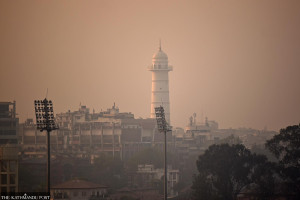Health
Children and adolescents to be screened for mental health conditions
Report shows the prevalence of current suicidal thoughts among adolescents was around four percent in 2020; suicidal attempt in the same age group was 0.7 percent.
Post Report
In a bid to address growing mental health problems in children and adolescents, the Ministry of Health and Population has decided to train health workers to examine their mental health conditions.
Officials said that as many as 150 health workers, including medical officers, nurses and paramedics, will be trained to screen the mental health conditions of this age group within the current fiscal year.
“We hope that the health worker training programme will help lessen existing mental health problems in children and adolescents,” said Dr Pomawati Thapa, chief of the Non-communicable Disease and Mental Health Section at the Epidemiology and Disease Control Division. “Those serving in primary health care centres will be trained first so that children and adolescents from villages will get access to the services easily.”
A report of the National Mental Health Survey Nepal-2020 shows that the prevalence of mental disorders among adolescents was 5.2 percent that year, and the neurotic and stress-related disorders were the most prevalent at 2.8 percent.
Likewise, the prevalence of current suicidal thoughts among adolescents was around four percent, while suicidal attempt in the same age group was 0.7 percent. The same report also shows that 0.6 percent of children and adolescents were found to have been suffering from depression.
The prevalence of suicidality, including current suicidal thoughts, lifetime suicidal attempts and future likelihood of suicidal thoughts, was found to be prevalent in the 7.2 percent population.
Experts say that mental health problems in children and adolescents could be several times more than what the survey portrays. They say that around 10 to 15 percent of the total children and adolescent population could have been suffering from various types of mental health issues, and due to methodological problems, the survey could not portray actual problems.
“Children and adolescents could suffer from various types of mental health problems, including attention deficit hyperactivity disorder, anxiety, depression, conduct disorder, obsessive-compulsive disorder, and post-traumatic stress disorder,” said Dr Arun Kunwar, child and adolescent psychiatrist. “But very few parents and teachers realise the problems and seek medical attention. Children get scolded and beaten both at schools and at home.”
A study carried out by the Nepal Health Research Council in the past shows that about 13 percent of Nepalis suffer from some form of mental disorder. This means around one in eight Nepalis have mental health issues. Moreover, the country simply does not have enough experts to treat mental health problems, it added.
Health officials said that there are only around half a dozen child and adolescent psychiatric doctors in the country, and only a few are serving in state-run health facilities. Similarly, the major contributors to the treatment gap are societal beliefs, traditions and stigma associated with mental disorders, according to experts.
“This training will help health workers notice problems and refer patients to health facilities with child psychiatrists and psychologists,” said Thapa.
Studies show the magnitude of suffering, the burden and costs for individuals, families and societies arising from mental health disorders are alarming in Nepal.
The World Health Organisation says that one in four people in the world has been affected by mental or neurological disorders at some point in their lives, and around 450 million people currently suffer from such conditions, placing mental disorders among the leading causes of ill health and disability worldwide.




 25.53°C Kathmandu
25.53°C Kathmandu













